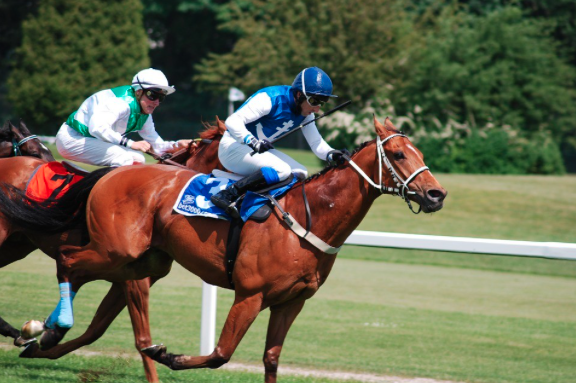Funding boost to improve horse and rider safety

University of Melbourne researchers will seek to reduce the risk of racehorse fatalities on the track as part of a $5.25 million funding commitment from the Victorian Government and Racing Victoria.
Victorian Racing Minister Martin Pakula announced new funding on Wednesday that will enable the Equine Limb Injury Prevention Research Program to continue for a further three years.
The program, run by the University of Melbourne Equine Centre in Werribee, is focused on developing best-practice strategies to prevent bone and joint injuries in racehorses.
It involves a collaboration between veterinarians, biomechanical engineers, epidemiologists and bone biology researchers.
Bone injuries are the most common cause of horse fatalities, but are also a common factor in lameness and premature retirement.
“Understanding the bone’s response to exercise and over-stress is critical to preventing injuries and fatalities and ensuring the long-term sustainability of the industry,” said Chris Whitton, Head of the Equine Centre.
Funding for the next stage of the program will commence from 2016.
The ultimate aim of the research will be to create a ‘mathematic model’ of bone injury that trainers, owners and racing authorities can then use as a tool to guide their training and racing regimes.
To do this, the research project will continue to:
- Examine pressure and loads in the lower limbs
- Investigate the processes surrounding bone fatigue
- Seek to understand bone modelling and re-modelling in horses both in training and at rest
- Analyse how distances and speeds affect bone fatigue, and
- Collect data on horse injuries.
The Victorian government is providing $2.25 million, Racing Victoria $1.6 million and the University of Melbourne will commit $1.4 million over the three years.
“We welcome the support from the Victorian Government and Racing Victoria for our work to enhance racehorse wellbeing and rider safety,” said Faculty of Veterinary and Agricultural Sciences Dean John Fazakerley.
“This funding, including a grant from the University of Melbourne, recognises the importance of scientific research to determine best practices in Australia’s racing industry on safety, training and care,” Professor Fazakerley said.
Professor Whitton, an equine veterinarian and world leading researcher investigating bone injury and fractures in horses, said the funds will go towards equipment and post-doctoral research projects.
His research has already identified how bone microdamage accumulates and is repaired during the training cycle.
But we need much more knowledge of how to manage racehorses in order to work with the natural bone adaptation and damage-repair processes, Professor Whitton said.
“At the moment, bone injuries are regarded as an inevitable consequence of training, but this needn't be the case,” he said.
“If we can unravel the intricacies of the bone’s response to stress and exercise; and detect bone damage early, it’ll go a long way to preventing long-term injury and fatalities.”
The program was initially set up in 2014 and represents a long-standing partnership between Racing Victoria, the State Government and the University.
Racing Victoria Head of Equine Welfare and Veterinary Services Brian Stewart said the program was critical for the industry.
“More than $300 million a year is spent on the training, care and welfare of Victoria’s racehorses and this major investment represents the industry’s continued commitment to improving the welfare of thoroughbred horses,” Dr Stewart said.
“Better understanding the bone’s response to exercise is crucial for our trainers – and the industry as a whole.”